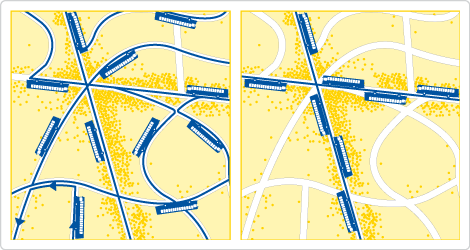
We're setting priorities for our growing transit system
The Service Improvement Plan (SIP) is a service expansion plan that builds on the existing bus network and identifies opportunities to add new routes and improve frequency and span on existing service. It is a prioritized vision for how Metro Transit will seek to improve the local and express bus service through 2030. The improvements identified in the SIP depend on additional funding for transit operations to be implemented.
2017 SIP Update
The 2017 Service Improvement Plan Update is a status report on the proposed improvements implemented to-date and the remaining resource need to implement the complete vision identified in the SIP. It also modifies proposed improvements where baseline existing service levels have changed since the spring of 2015 or more is known about connecting transitway alignments.
> 2017 SIP Update Report (PDF)
> View 2015 SIP
Transit Planning 101
Español Lus Hmoob Soomaali
Many things go into making the transit network effective. Here are four key elements:
Transit that connects a multitude of people to the places where they live, work, shop and play.
Transit that is a cost-effective use of public funds.
Transit that provides a basic level of access across the region.
Transit that supports efficient development.
Metro Transit uses these planning principles in mind when designing bus service:

Design simple, direct routes
Simple routes that travel in nearly a straight line are easy to understand and provide faster and more frequent service. A route that zigzags will be slower, more confusing and cost more to operate.
Serve areas with high density of uses
Places with many people and destinations within a compact area are more cost-effective to serve with transit. Higher density allows for a smaller number of routes to serve a greater number of people and needs, making transit useful to more people.

Balance frequency and coverage
This is the big tradeoff in transit. Metro Transit must balance its limited resources between providing fast, frequent service that people may have to walk to with service that covers more area but operates less frequently. The goal: serving the highest number of people while providing basic access across the region.
Match level of service to demand
Whenever possible, we offer bigger buses and more frequent service where needed. Providing too much service is expensive and prevents trips and routes from being added in another area that needs it. Providing too little service makes transit less useful and can lead to crowding on existing service.